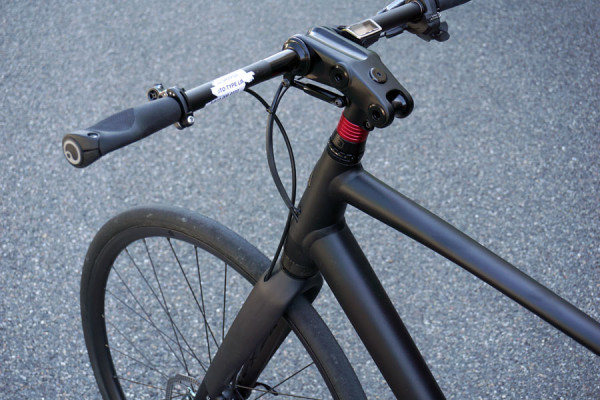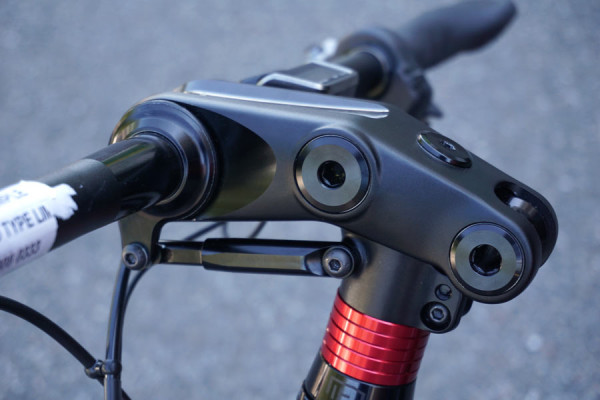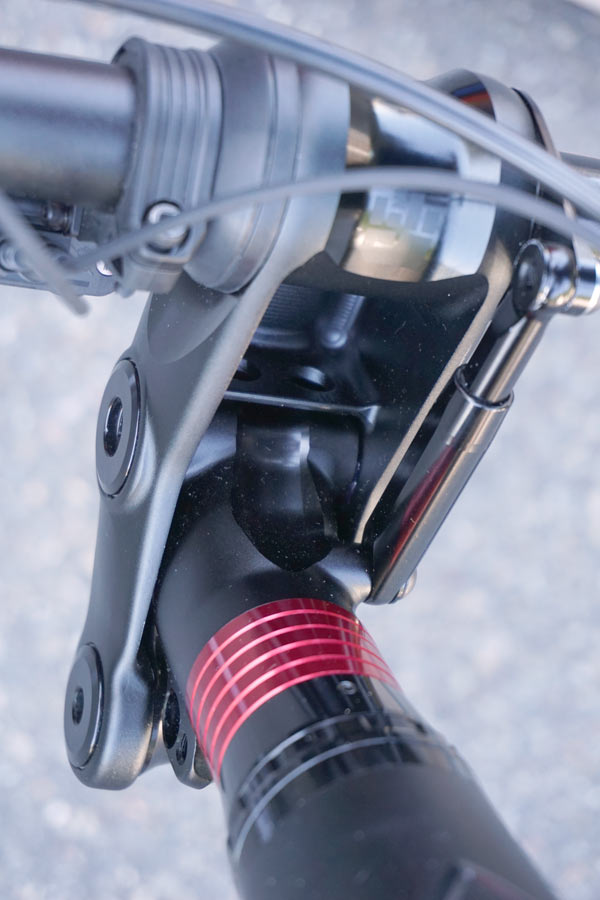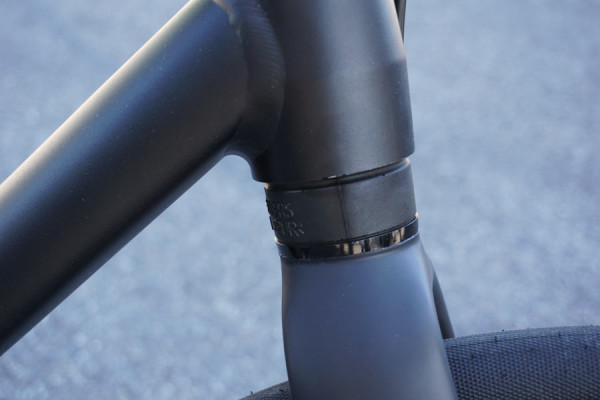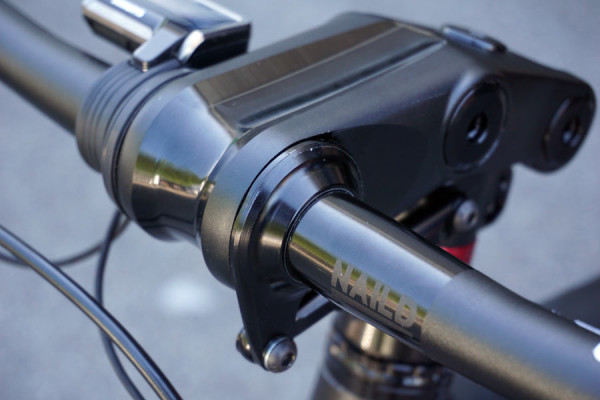Imagine if you could all but erase not just bumps, but vibration, too, from your commuter, road, cyclocross or gravel bike. That’s the promise of the new NAILD R3ACT front suspension.
It’s named for Newton’s third law that says every action has an equal and opposite reaction, and this particular prototype is made for flat bar road bikes, but designer Darrell Voss has bigger plans for it. It’s not really a stem suspension or a fork suspension, it’s both, and it requires a rider’s weight to be on the handlebars for it to work.
Voss explains that in the auto industry, they want about 10x the weight of the wheel:tire combo in the structure immediately surrounding it in order to properly deaden vibrations before they reach the driver. On a bike, that ratio isn’t practical, so he faked it by isolating the handlebars from the fork via a leveraged connection between the stem and the steerer tube. Press down on the frame and it barely moves. Put your weight on the bars and it absorbs bumps smoothly and easily…
There have been several options over the years, including Softride’s parallelogram design, the recent Redshift Shockstop, and the very old Klein Mission Control (which Voss helped design and clearly inspired this one). He says traditional suspension stems have been designed to soak up big bumps, but this one’s made to handle big bumps just as well as killing road buzz by also incorporating fork movement into a carefully controlled system.
The design is capable of 40-60mm of travel from handlebar to ground. Or it could be less, say 30mm for a pure road bike. The parallelogram design keeps the handlebar level as the suspension moves through it’s travel, which becomes more important the longer that travel is, otherwise it could end up rolling around enough that your hands lose some grip. It’s pressed in as part of the arm reaching down to the parallel link, and it rotates on large headset bearings.
While it looks simple, it’s actually quite an engineering feat. It uses a double steerer tube – an outer one that is the actual steerer tube fit into the headset bearings, and the inner steerer tube is pulled upward as the stem is compressed. It slides inside a large bushing at the bottom and is constrained by the pivot points at the top, so friction is minimal. You could think of it as the fork pushing up and causing the handlebar to sink a bit, or the handlebar’s travel causing the stem to pull the fork upward. While not an exact analogy, think of a floating suspension where the rear shock is captured between two moving links (like on the new Trek Top Fuel) and you start to get an idea of how this feels.
The actual suspension is provided by an elastomer that’s pressed into the frame and can be changed for body weight. The top of it is recessed into the head tube, so the lower headset bearing sits about a centimeter or so higher than normal inside the head tube.
All in, Voss says it’s only a 200g or less weight penalty. Because it’s an entirely integrated front end, this will be more of an OEM offering than aftermarket upgrade. And Voss already has OEM customers lined up for flat and drop bar bikes from well known bike brands. It’ll be a premium addition to the bike, not a cheap upgrade at first, but as the fork legs and handlebars switch from carbon to alloy, it’ll come down.
If it seems like an overly convoluted system to add just a bit of cush to a bike, you’d be missing the point. The action is incredibly smooth, and incredibly controlled. Standing and hammering doesn’t create any unwanted bobbing under your shifting weight. And on my test rides, it cut vibration and rattling over storm grates by at least 2/3, and when riding directly into a 2-3″ curb (about what a nasty pot hole would be), it just absorbed it completely. The effect could be far less rider fatigue from the drastic vibration reduction and safer commuting on rough streets. And for gravel and ‘cross? It might just be a dream come true.
He also showed off new flat mount versions of his ICEIT brake mounts, which integrate with the fork to create a firmer mounting platform that dissipates heat better so it can’t affect the resins used in carbon forks. Check out the originals along with the new NAILD locking quick release thru axle system in this post.
